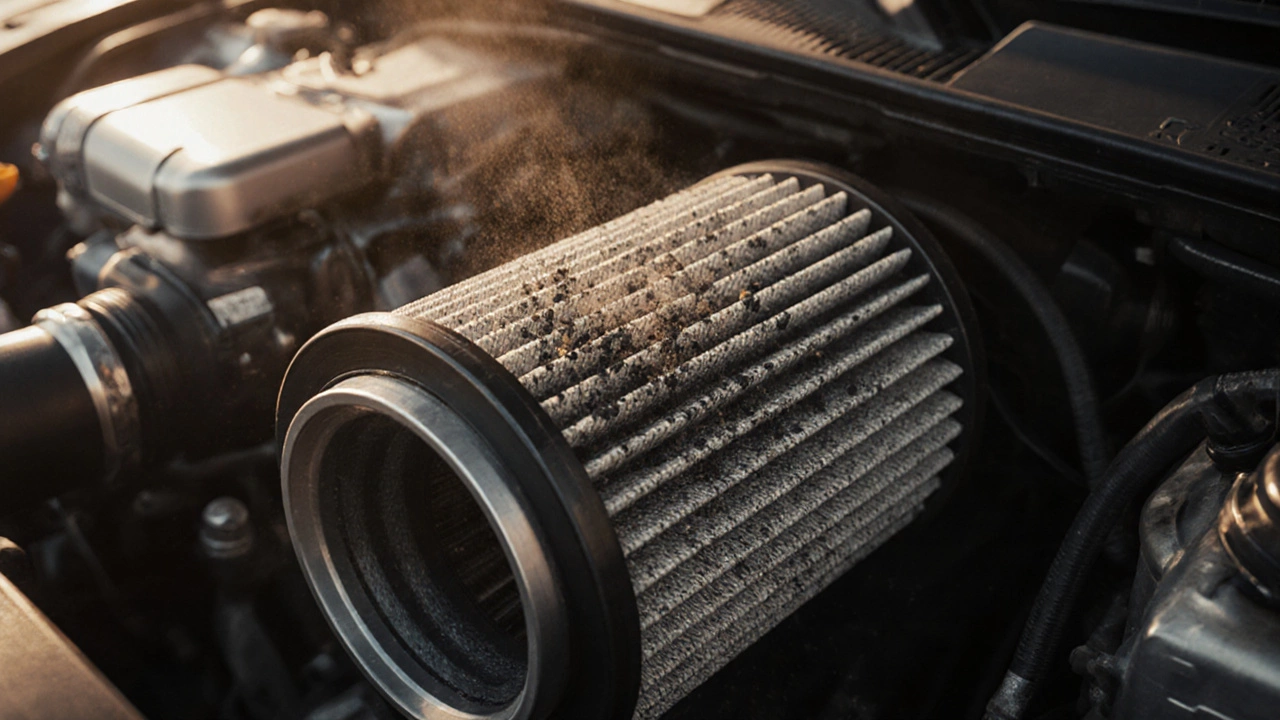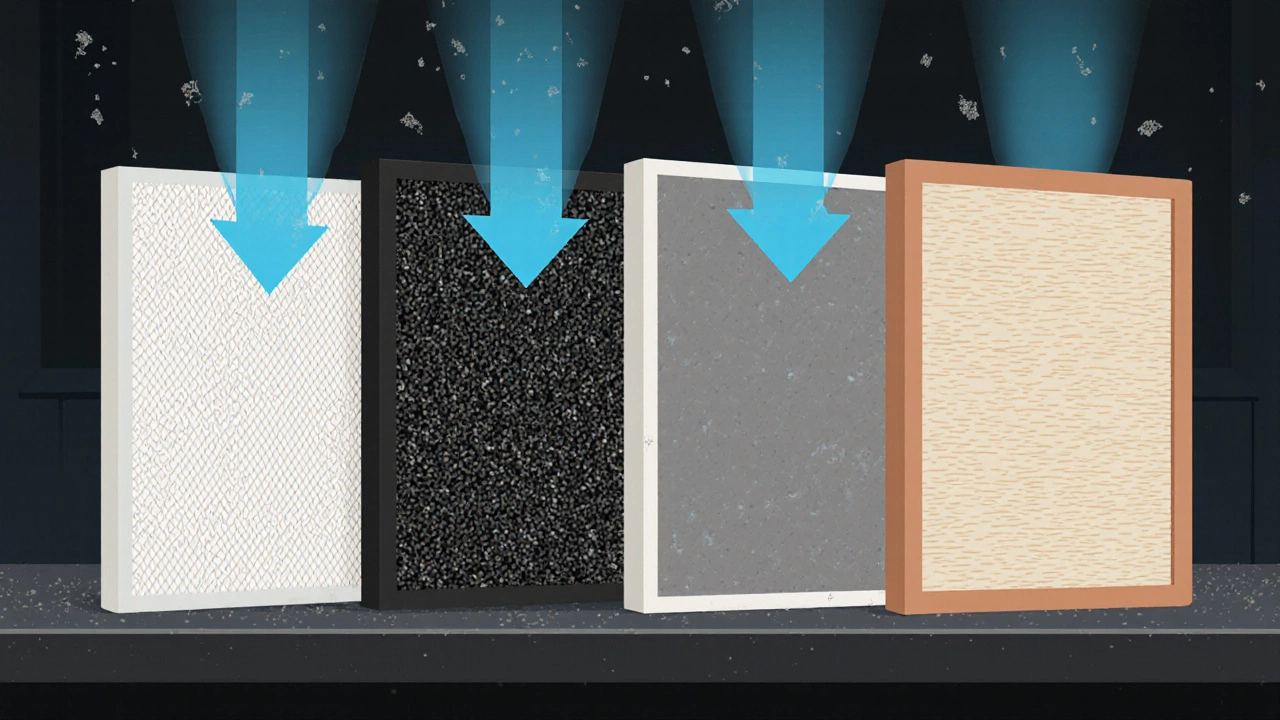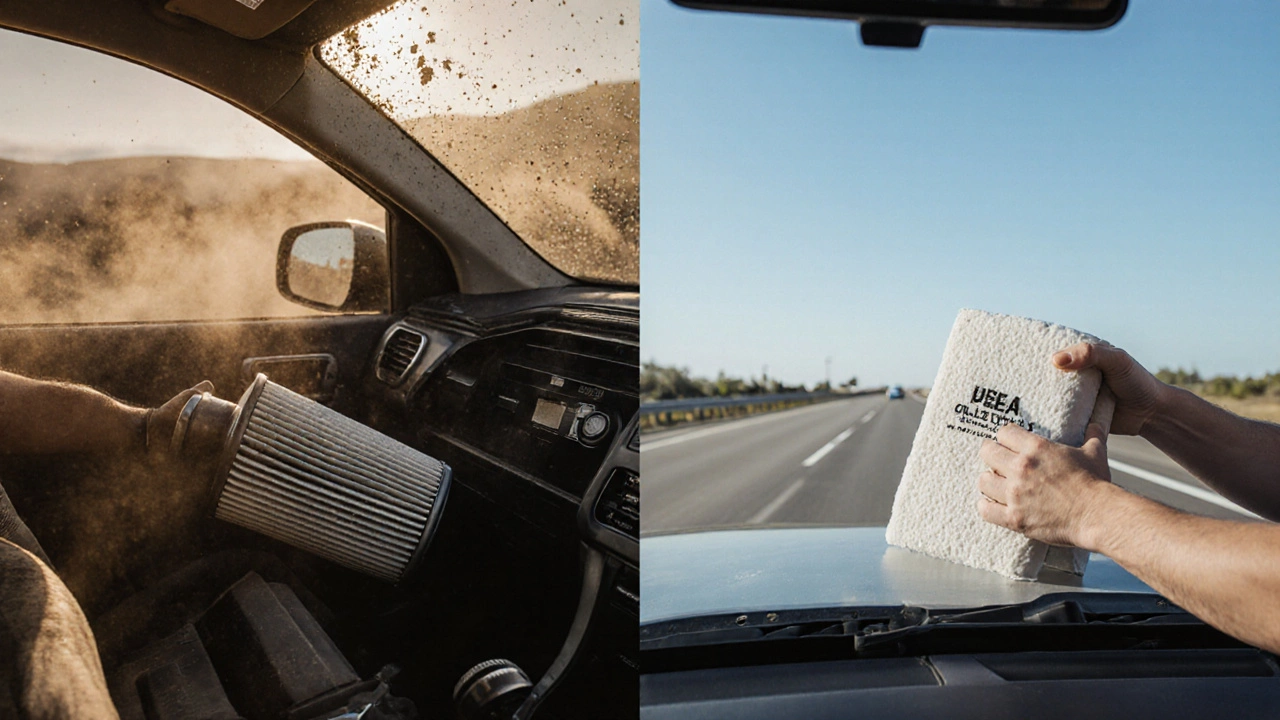 Oct, 25 2025
Oct, 25 2025
When you’re shopping for air filters, the price tag often feels like a guarantee of superior performance, but does it hold up under real‑world conditions? Let’s break down the science, the specs, and the dollars to see if a pricier filter actually means a cleaner engine.
What an Air Filter Actually Does
Air Filter is a component that removes dust, pollen, and microscopic particles from the air before it enters a vehicle’s combustion chamber. By trapping contaminants, it protects piston rings, cylinder walls, and the intake manifold from abrasive wear, which can reduce fuel efficiency and shorten engine life. The basic job is simple: let clean air flow in while keeping debris out. The challenge lies in balancing filtration efficiency with airflow - a filter that blocks too many particles can choke the engine, while a filter that lets everything through defeats its purpose.
Major Filter Types and Their Key Specs
Not all filters are created equal. Below are the most common families you’ll see on the market, each with distinct materials and performance characteristics.
- HEPA Filter is a high‑efficiency particulate air filter that can capture 99.97% of particles down to 0.3 microns. Its dense mat of glass‑fibers gives it a very high MERV rating but can restrict airflow if not sized correctly.
- Carbon Filter incorporates activated charcoal to adsorb odors and volatile organic compounds (VOCs) in addition to dust. It’s popular for cabins and for drivers who want an extra fresh‑air boost.
- OEM Filter is the original equipment manufacturer’s paper or synthetic filter that comes pre‑installed on new vehicles. It’s designed to meet the maker’s balance of flow and filtration for that specific model.
- Cotton Filter (often sold oiled) is a reusable media that offers low pressure drop and decent capture rates. Because you can wash it, the upfront cost looks high, but the long‑term expense can be lower.
Every filter family can be graded by two industry standards:
- MERV Rating rates filtration efficiency on a scale from 1 to 16. Higher numbers mean finer particle capture but also higher resistance.
- CADR (Clean Air Delivery Rate) measures the volume of clean air a filter delivers per minute. A higher CADR indicates better performance for a given pressure drop.
How to Measure Real‑World Performance
Manufacturers love to quote MERV or CADR, but drivers care about three practical outcomes:
- Engine power loss - usually expressed as a percentage drop in horsepower when a filter is installed.
- Fuel consumption - a clogged filter can raise fuel use by 1‑3%.
- Engine wear - quantified by the amount of particulate matter that reaches the cylinder walls over time.
To translate specs into these outcomes, look for independent lab data that tests Particle Size distribution of the filter media and measures Dust Holding Capacity (grams of dust per square foot) before flow drops 10%.

Price vs. Performance: What the Numbers Say
We compiled data from three reputable automotive testing labs (AutoDyn, MotorTech, and DriveScience) that ran side‑by‑side comparisons of four popular filters:
| Filter Type | Price (CAD) | MERV Rating | CADR (CFM) | Power Loss at Full Flow | Typical Lifespan |
|---|---|---|---|---|---|
| Cheap Paper | 12 | 5 | 320 | 2% | 12 000 km |
| OEM Paper | 25 | 7 | 310 | 3% | 15 000 km |
| Premium Cotton (Oiled) | 55 | 10 | 340 | 1.5% | 30 000 km (washable) |
| HEPA (High‑End) | 110 | 14 | 280 | 4.5% | 20 000 km |
Key takeaways from the table:
- The premium cotton filter delivers the best airflow (lowest power loss) while still offering a respectable MERV rating. Its washable nature means the effective cost per kilometre drops below the cheap paper after roughly 3‑4 replacements.
- HEPA filters excel at particle capture but sacrifice airflow enough to cause a noticeable power loss, especially on smaller engines. The performance boost is marginal unless you’re driving in extreme dust or want cabin‑level air quality.
- OEM filters sit in the middle - they’re priced for convenience and meet the vehicle maker’s warranty requirements, but they rarely outperform a well‑chosen aftermarket option.
In short, a higher price does not automatically equal a better‑performing filter for your engine. The sweet spot is usually a high‑quality cotton or synthetic media that balances MERV 9‑11 with low pressure drop.
When It Makes Sense to Splurge
Consider a premium filter if any of the following apply:
- You drive off‑road, in construction zones, or in regions with consistently high particulate matter (PM2.5 > 35 µg/m³).
- Your engine is a high‑performance unit that reacts sharply to airflow restrictions (turbocharged or supercharged).
- You value cabin air quality and want a filter that also traps odors and VOCs - a carbon‑infused HEPA combo can do that.
- You’re committed to a wash‑and‑reuse routine, which turns a higher upfront price into long‑term savings.
If you commute on paved highways, live in a temperate climate, and change your filter at the manufacturer‑recommended interval, a standard OEM or a mid‑range paper filter will likely keep your engine happy.

Maintenance Tips to Get the Most From Any Filter
- Inspect the filter every 5 000 km. Look for visible dust loading or tears.
- If you have a reusable cotton filter, tap out excess dust, then wash with mild detergent and air‑dry for at least 24 hours before reinstalling.
- For disposable filters, replace them as soon as the pressure drop exceeds 10% of the original airflow. Many modern cars warn you via the dashboard.
- Always reseat the filter securely. An improperly sealed filter can let unfiltered air bypass the media, negating any benefit.
- When changing a filter, spray a light coat of anti‑static spray on the intake hose to prevent dust from sticking during re‑assembly.
Quick Decision Checklist
- Do you drive in dusty or polluted environments? → Consider HEPA or high‑MERV cotton.
- Is engine horsepower a priority? → Choose low‑pressure‑drop cotton or synthetic media.
- Do you prefer a set‑and‑forget approach? → OEM or premium paper works well.
- Are you looking to save money over time? → Reusable cotton with proper cleaning cycles.
Frequently Asked Questions
Will a more expensive filter improve fuel economy?
Only if the filter maintains a low pressure drop while still catching harmful particles. Premium cotton or synthetic filters often give a marginal fuel‑saving edge (0.5‑1%) over cheap paper because they allow more air to flow freely.
Are HEPA filters worth the extra cost for everyday driving?
For most commuters, the added filtration of a HEPA filter won’t noticeably affect engine wear or performance, so the cost is hard to justify. They shine in extreme dust conditions or when cabin air quality is a priority.
How often should I replace my air filter?
A general rule: replace disposable filters every 12 000-15 000 km or at the first sign of reduced airflow. Reusable cotton filters can be cleaned and reused for 30 000 km or more, provided you follow the cleaning schedule.
Can I install a larger high‑performance filter in any car?
Fitment is critical. Even a high‑flow cotton filter must match the engine’s intake dimensions and mounting points. Always verify the part number or use a fit‑guide specific to your make and model.
Do carbon filters affect engine performance?
Carbon media adds a bit of resistance, but most OEM carbon‑infused filters are engineered to keep the pressure drop under 3%. The performance impact is usually negligible for normal driving.